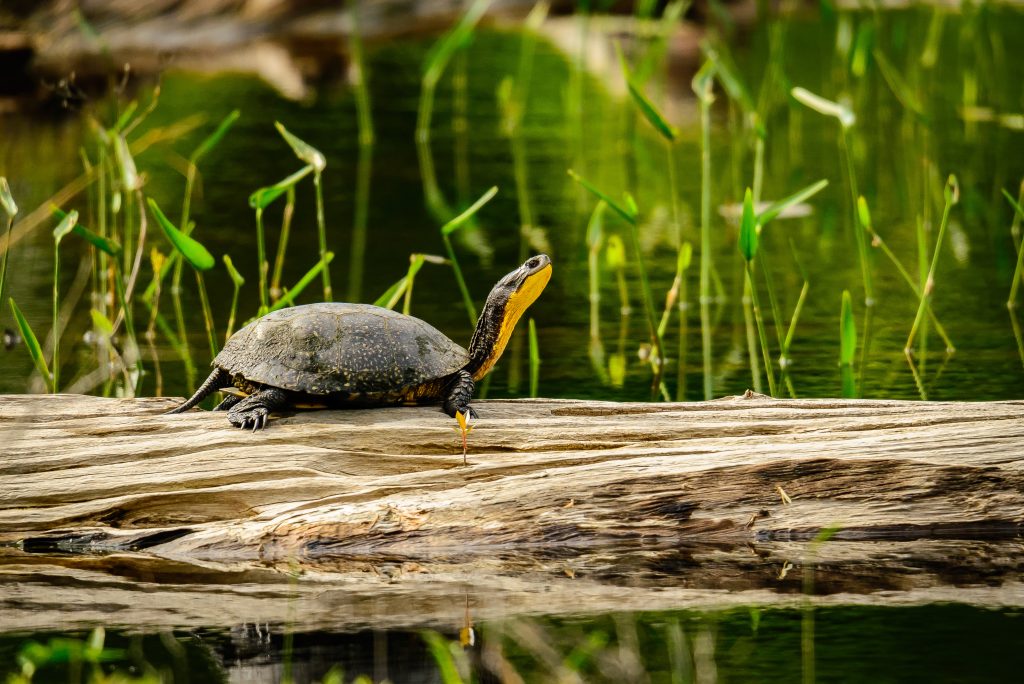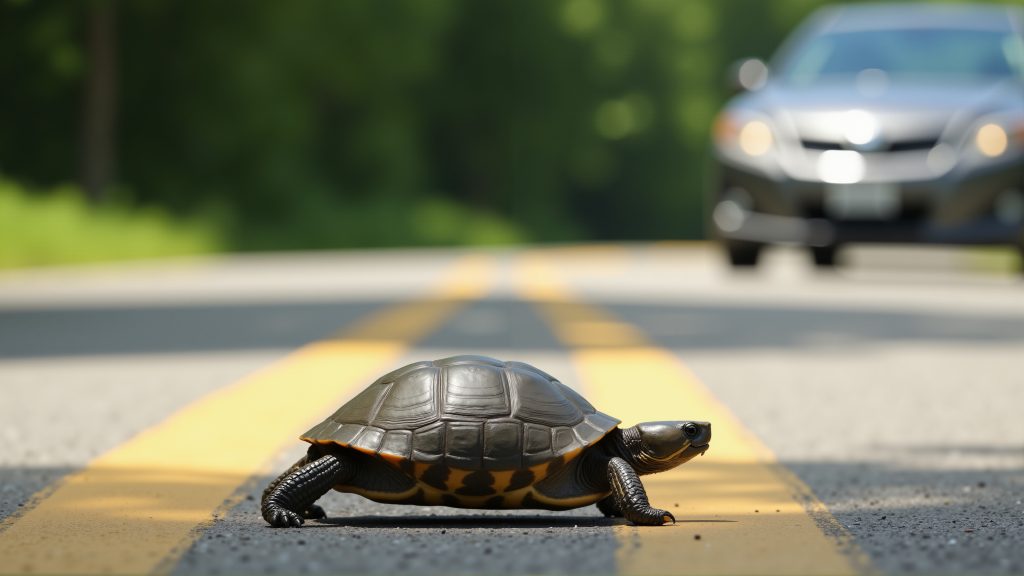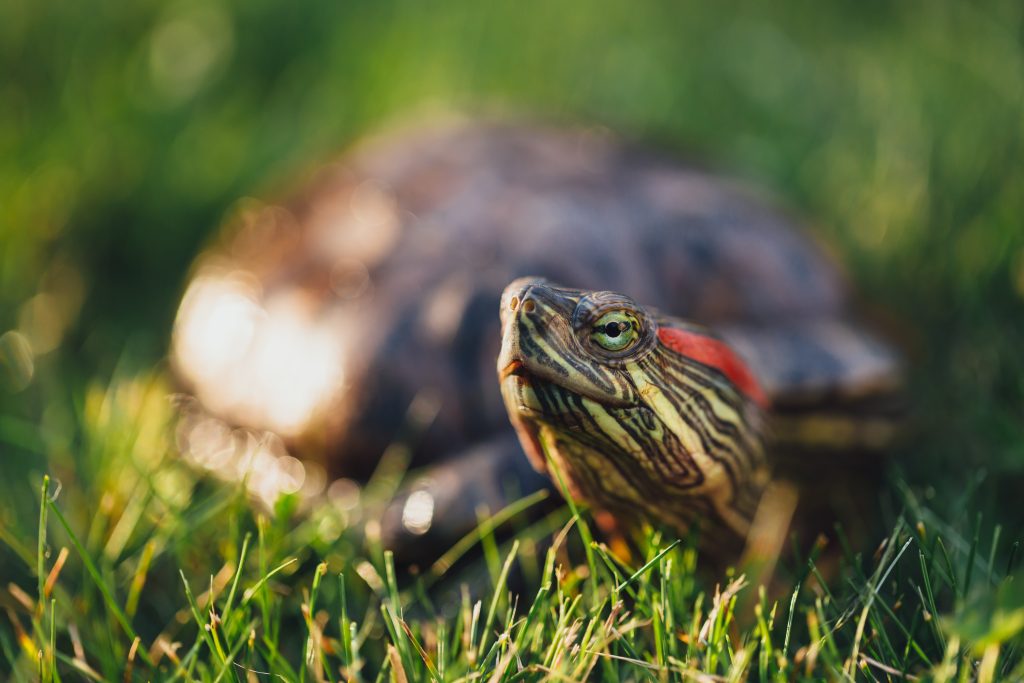Turtles are some of the most fascinating — and vulnerable — species found in Ontario. These ancient reptiles have survived for over 200 million years, outliving dinosaurs and adapting to countless environmental changes. Yet today, nearly every species in Ontario faces significant threats, many of them human-caused. It’s time we slow down, take notice, and help protect these amazing creatures before it’s too late.
Why Turtles Matter
Turtles play a crucial and often overlooked role in maintaining the health and balance of Ontario’s ecosystems. As natural scavengers, they act like the cleanup crew of our lakes, ponds, and wetlands — feeding on dead fish, decaying vegetation, and other organic matter. This behavior helps to prevent the spread of disease and keeps water bodies cleaner and healthier for all aquatic life.
Their diet also includes algae and aquatic plants, which helps to regulate vegetation growth and maintain biodiversity in delicate wetland systems. Some turtles, like the Wood Turtle, even contribute to seed dispersal. By consuming fruits and berries and later depositing seeds elsewhere in their droppings, they support plant reproduction and forest regeneration — much like birds and mammals do.
In addition, turtles play an important role in nutrient cycling. Their movement between aquatic and terrestrial environments transports nutrients between ecosystems, helping to fertilize both soils and waterways. Nesting females, for instance, bring nutrients from water to land when they lay eggs, benefiting local vegetation and insect populations.
Finally, turtles are a keystone species in many ecosystems — meaning their presence (or absence) has a ripple effect on numerous other plants and animals. Predators rely on turtle eggs and hatchlings as a food source, while turtles themselves help control insect and amphibian populations. When turtle populations decline, these delicate relationships can fall out of balance, leading to unintended consequences for entire habitats.
In short, turtles aren’t just inhabitants of Ontario’s wild spaces — they are essential to the life within them. By supporting turtle conservation, we’re also safeguarding the biodiversity, resilience, and overall health of our shared environment.
Turtles of Ontario: Who They Are and Where They Live
Ontario is home to eight native turtle species, and sadly, all eight are now listed as species at risk either provincially or federally. Here’s a look at a few of them:
1. Snapping Turtle
- Status: Special Concern (Ontario and Canada)
- Where: Throughout southern and central Ontario
- Fun Fact: Can live over 70 years; often seen crossing roads during nesting season.
2. Painted Turtle
- Status: Not at risk (in Ontario), but still vulnerable
- Where: Widespread across ponds, lakes, and slow-moving rivers
- Fun Fact: Ontario’s most commonly seen turtle; their bright yellow stripes make them easy to spot.
3. Blanding’s Turtle
- Status: Threatened
- Where: Wetlands and shallow lakes, especially in southwestern and central Ontario
- Fun Fact: Recognizable by its bright yellow throat and permanent “smile.”
4. Spotted Turtle
- Status: Endangered
- Where: Rare; found in isolated wetland areas in southern Ontario
- Fun Fact: Small and secretive, with yellow spots on its black shell.
5. Wood Turtle
- Status: Endangered
- Where: Riverbanks and forested streams in Ontario’s southeast and northeast
- Fun Fact: One of the few turtles that ventures onto land for much of its life.
Why Are Turtles at Risk?
There are many threats facing turtles in Ontario, including:
- Road mortality: Thousands of turtles are killed by cars each year while crossing roads to nest.
- Habitat loss: Wetlands and nesting grounds are being destroyed by development and agriculture.
- Illegal pet trade: Some species, especially rare ones, are captured and sold illegally.
- Pollution: Contaminated water and litter harm turtle populations and their food sources.
- Predation: Raccoons and other predators eat turtle eggs, especially when human presence increases predator populations.
What You Can Do to Help
- Watch the roads: Drive cautiously near wetlands, especially in May and June when turtles are nesting.
- Help them cross safely: If it’s safe, move a turtle in the direction it’s heading — never turn it around. Use two hands and hold it low to the ground. For snapping turtles, use a shovel or gently guide it with a stick.
- Protect nests: If you see a turtle laying eggs in your yard, leave the nest undisturbed. You can cover it with a protective wire mesh (with openings large enough for hatchlings to escape) to prevent predators from digging it up.
- Don’t take them home: Turtles are wild animals and do not make good pets. It’s illegal to remove them from the wild in Ontario.
- Spread awareness: Teach others about turtle conservation and support local wildlife rehab centres.
What to Do if You Find an Injured Turtle
If you come across an injured turtle, don’t assume it’s dead — even if it looks badly hurt or isn’t moving. Turtles have incredibly slow metabolisms and can survive catastrophic injuries or long periods without movement, especially if in shock or cold. Many have been successfully rehabilitated even after appearing lifeless.
Here’s what to do:
- Move it off the road (if safe) and place it in a well-ventilated box or container.
- Do not feed it or give water.
- Keep it in a cool, quiet place.
- Contact a licensed wildlife rehabilitator immediately — ideally one that specializes in reptiles. You can also contact the Ontario Turtle Conservation Centre:
🐢 Phone: 705-741-5000
🌐 Website: ontarioturtle.ca
Turtle Resilience: A Final Thought
Turtles have been around for millennia. They are survivors, builders of ecosystems, and symbols of patience and endurance. With our help, they can continue their journey through time — crossing roads, nesting on sandy banks, and paddling through marshes for generations to come.
But they can’t do it alone.
Let’s stay wild for rehab — and wild for turtles.


